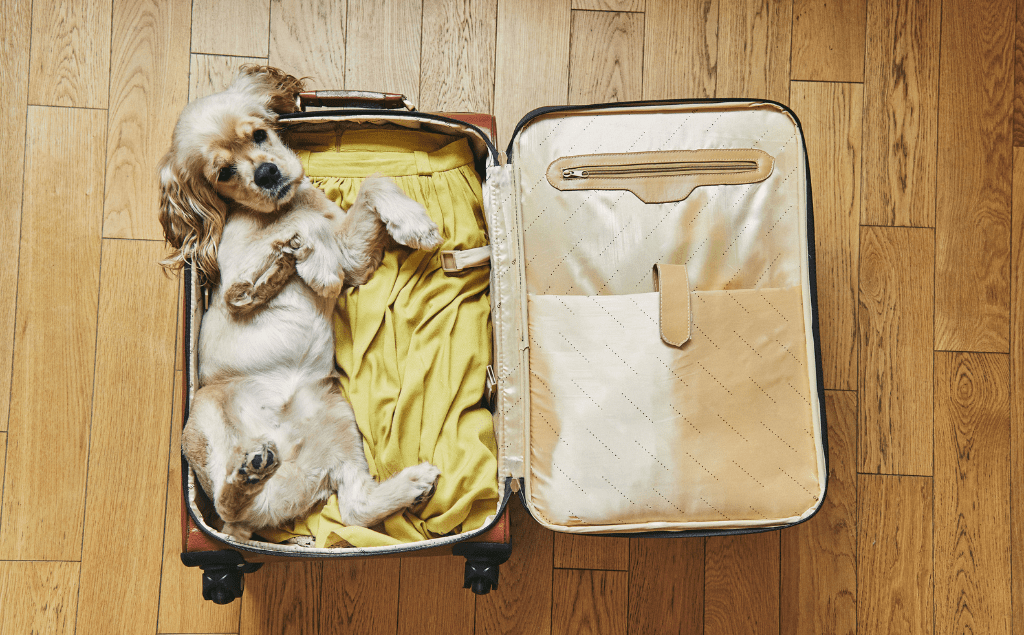
The Ultimate Vet-Approved Guide to Traveling with Pets
Whether you're planning a road trip or flying to a faraway destination, bringing your pet along with you ensures they’re part of the adventure. But as you’re probably already aware, traveling with pets comes with its own set of challenges. From understanding local regulations to knowing where to go in an emergency, there’s plenty to consider.
This guide will provide essential advice for traveling with pets, including practical tips for preparing, packing, and keeping your pet safe throughout the journey.
The Pre-Travel Vet Visit
Before embarking on your trip, schedule a visit to your veterinarian to ensure your pet is healthy enough to travel. Here's what you need to do during this check-up:
- Health Assessment: Get a full evaluation of your pet's general health from your primary veterinarian. Discuss their fitness for travel and address any existing medical issues or concerns.
- Vaccinations and Documentation: Ensure Bordetella and rabies vaccinations are up-to-date and appropriate for your destination. If crossing state or international borders, you may need a health certificate* signed by a licensed vet.
- Travel-Specific Advice: Your vet can provide tips for travel, adjust medications if needed, and recommend methods to reduce travel anxiety.
Having these steps completed ensures your pet is ready to roll. Plus, knowing they're happy and healthy will only add to your peace of mind!
*Depending on where you are traveling, the certification process can be a months’ long process. Be sure to contact your veterinarian as soon as you know the details of your trip. If not done properly, your furry friend could end up in quarantine. Be aware that there are fees associated with health certificates due to the complicated paperwork involved.
Packing Essentials for Your Pet
Traveling with pets is easier when you're fully prepared. Here's a checklist to create the ultimate packing list for pets:
- Food and Water: Pack enough food for the trip and some extra, just in case of delays. A collapsible water bowl makes hydration on the go easy.
- Treats and Toys: Bring familiar items like their favorite toys to provide comfort during the trip. Chew toys can reduce boredom and keep them occupied.
- Comfort Items: A cozy blanket or their usual bedding will make unfamiliar spaces seem more familiar. Consider a pet carrier, crate, or car seat for lounging safely.
- Hygiene Products: Poop bags for dogs, a portable litter box for cats, and extra cleaning supplies like wipes and towels.
- Pet First Aid Kit: Include essentials like bandages, tweezers, and any prescribed medications. Please keep in mind that you should never attempt first aid on your pet without the advice of a licensed veterinarian.
- Paperwork: Proof of vaccinations and identification information, such as the microchip ID number and the microchip company contact number to call in case your pet is lost.
By being prepared, you'll keep your pet comfortable while staying ready for unexpected surprises.
Choosing the Right Mode of Transportation
When traveling with pets, how you get to your destination matters greatly. Here’s how to ensure your pet’s comfort, no matter how you plan to travel:
- Car Travel: Secure your pet with a safety harness or secure crate to prevent distractions and injuries. Plan frequent stops for bathroom breaks, exercise, and water. Be sure your pet is secured in a crate or on a leash during any stops, as pets have been known to bolt out of the vehicle during travel stops.
- Air Travel: Book with a pet-friendly airline and check airline-specific pet policies ahead of time. Use an airline-approved carrier and provide clear identification tags with your contact info. Choose direct flights whenever possible to minimize stress on your pet. Understand that there are likely to be extra fees associated with air travel.
- Train or Bus Travel: Confirm in advance if pets are allowed (regulations vary by region and company). Ensure your pet is comfortable in their carrier for longer journeys.
Understanding your pet’s temperament and any travel restrictions will help you decide the safest and most comfortable option.
Finding Pet-Friendly Accommodations
Not every hotel or rental welcomes pets, so finding the right spot for you and your companion is crucial. To book the perfect stay:
- Search for Pet-Friendly Hotels and Airbnbs: Use booking platforms with pet-friendly filters or search local websites for recommendations.
- Understand Fees and Rules: Confirm any additional fees, size restrictions, or specific policies on noise.
- Check for Amenities: Look for places with pet-friendly amenities like fenced yards, nearby green spaces, or even pet sitting services.
A little extra research ensures both you and your pet will feel right at home.
Keeping Your Pet Comfortable in Transit
While on the go, your pet’s comfort and well-being should always come first. Here’s how to care for them during travel:
- Stay Hydrated: Offer fresh water often. Pack portable water dispensers or collapsible bowls for easy access.
- Stick to Their Routine: Serve meals at regular times and give them plenty of rest breaks to keep them relaxed.
- Monitor Temperature: Ensure they won’t be left in extreme heat or cold, especially if traveling by car.
Keeping your pet content will set the tone for the entire trip and ensure they’re as happy as you are about the trip ahead.
Consider Local Safety and Regulations
Once you reach your destination, it’s essential to familiarize yourself with local pet laws to avoid surprises. Here's what to do:
- Research Local Pet Laws: Check leash laws, designated pet areas, and any breed restrictions in the area.
- Safety First: Secure your pet on a leash and monitor them in new environments. Unfamiliar sights, sounds, and smells can be overwhelming. Be sure your pet is wearing a collar with tags with clear contact information on them.
- Adhere to Guidelines: Follow guidelines for waste disposal and areas where pets are not allowed.
Ensuring your furry companion’s safety and respecting local laws and regulations will keep the trip fun for everyone.
Be Prepared for Emergencies
Emergencies can happen anywhere. Being prepared ensures you're never caught off guard. Take these steps:
- Save Vet Information: Before you leave, locate the closest emergency veterinary hospital to your destination.
- Emergency Kit: Keep the contact information for your primary vet and any current prescriptions handy.
- Know Signs of Trouble: Learn to recognize common signs of distress, like excessive panting, lethargy, or changes in behavior.
If your pet faces unexpected health issues, having these precautions in place will give you the confidence to act quickly.
Enjoy Worry-Free Travel with Your Pet
Traveling with pets may come with some challenges. However, with the right preparation, it’s an experience that both you and your furry friend will cherish forever. From vet check-ups and packing essentials to finding pet-friendly accommodations, each step paves the way for a smoother trip.
Most importantly, always know where to go in case of an emergency. Find your nearest Emergency Veterinary Care Center (EVCC) to ensure your pet gets the expert care they need, exactly when they need it.
Recent Posts
About Us
At Emergency Veterinary Care Centers (EVCC), we know that pet emergencies are unpredictable and often stressful. That's why our team, with over 20 years of emergency and critical care experience, is ready to assist you and your pet in the toughest situations.


